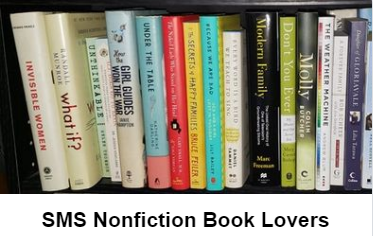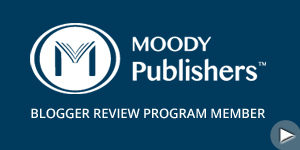I’m not sure what to say about this book. The full title is You Are Your Child’s First Teacher: What Parents Can Do With and For Their Children from Birth to Age Six. I picked it up because I figured it would help me in my early homeschooling. Here’s a little from the back of the book:
“As a parent today, you face a daunting dilemma: How do you best support and enhance your child’s development in the early years – the years in which you are your child’s first teacher? Early childhood Waldorf educator Rahima Baldwin Dancy speaks up for a fresh sensibility about raising children, one that helps children be children while enabling you to recognize your important role as a parent. Completely revised and updated from the 1989 first edition, You Are Your Child’s First Teacher offers new ways of seeing and understanding your child that will provide fertile ground for your own creativity and help increase your confidence in what you are doing. Making the most of the magical years from birth to age size will enrich the lives of you and your child now and for years to come.”
The book wasn’t quite what I was expecting but there were a lot of good parts to it. If you don’t know anything about how Waldorf education works and Rudolf Steiner’s teachings, this book will teach you about them but that’s not what it’s meant to do. It has great info on helping your baby, toddler and young child to fully develop at a medium pace. Steiner’s teachings are that before the age of about seven (when adult teeth erupt) a child should be learning through play, including imitation and imagination. Steiner did not believe in lessons, worksheets and concepts being taught during that period. So the book explains typical physical, intellectual and emotional development of the age group and how to encourage the correct type of play/toys/activities to enhance these skills. For example in Waldorf schools and daycare, children play with expressionless dolls (so they can be any emotion), toys made out of natural materials (both for safety and health) and do art on rounded pieces of papers and model with beeswax (because sharp corners and hard clay aren’t good for young children.)
I do agree with some of Steiner’s teachings but not all. Some of them seem to excessive to me. If however, you agree wholeheartedly with Steiner’s teachings and intend to raise your child in a Waldorf setting, you will definitely love this book and would probably rate it a 41/2 to 5.
The most interesting parts were about nursery rhymes and fairy tales and they’re role in early childhood education and the suggestions for celebrating and learning the festivals and seasons.
Here is a quick overview of the chapters:
1 – You Are Your Child’s First Teacher
Parenting Dilemmas today, lack of support, a new way of thinking, our tasks as first teachers, how children learn….
2 – Receiving and Caring for the Newborn
Gentle birth choices, sensitivity, the baby’s senses, what you can expect, what baby needs….
3 – Growing Down and Waking Up
The Baby between 6 weeks and 8 months, Learning to Walk, The Second Year and mastering language, emergence of thinking and sense of self.
4 – Helping Your Baby’s Development in the First Year
Physical, Intellectual and Emotional development, Language development, toys for the first year, things to do with baby.
5 – Helping Your Toddler’s Development
Balanced development, dealing with negative behaviour, language development, imaginative play, providing rich environment, toys, things to do.
6 – Parenting Issues of First Three Years
Importance of Rhythm, weaning, crying babies, back to work, difference between Fathering and Mothering, Immunizations, Toddler’s Senses, Why children are different from one another, toilet training, separation anxiety, cabin fever.
7 – The Development of Fantasy and Creative Play
Three stages of play, experiencing the world through play, importance of play, how to encourage child’s creative play
8 – Nourishing Child’s Imagination
Importance and development of imagination, importance of oral language and storytelling, inner meaning of fairy tales, sharing stories from other cultures, healing power of puppet plays.
9 – Developing Your Child’s Artistic Ability
Experiencing color, watercolor painting, crayons, beeswax modeling, making things with children, freeing your own inner artist.
10 – Your Child’s Musical Ability
Cognitive development, singing with your child, movement games and finger plays, pentatonic music and the “Mood of the Fifth”, what about music and dance lessons?
11 – Rhythm and Discipline in Home Life
Discipline, Rhythm of the year, celebrating festivals and the course of the year, birthdays.
12 – Cognitive Development and Early Childhood Education
Academic vs. Play-Based, Why not academics?, Value of Preschool, Waldorf Program, Waldorf Education in the home, when is child ready for first grade, what happens around age seven, beginning academic work, advanced/gifted children.
13 – More Parenting Issues
(Question and Answer), Preparation for Life, Computer, Balanced Development, Television, Toys, Video Games, Immunizations, The Sick Child, Religion and Young Children, Conscious Parenting.
At the end of each chapter is a list of recommended reading and sometimes organization and stores to contact. There are also 5 appendices: Sources for Steiner Books, Rudolf Steiner and Waldorf Education, Alliance for Childhood, Waldorf Teacher Training Programs and School Associations and Seminars on Waldorf Early Childhood Education. You can also find more books to check out in the Bibliography.
Although I don’t agree with everything and outright disagree with some of it, I’m glad I read the book and I got something out of it. I have a large list of books to check out and some new activities to try (watercolor, beeswax modeling.)









